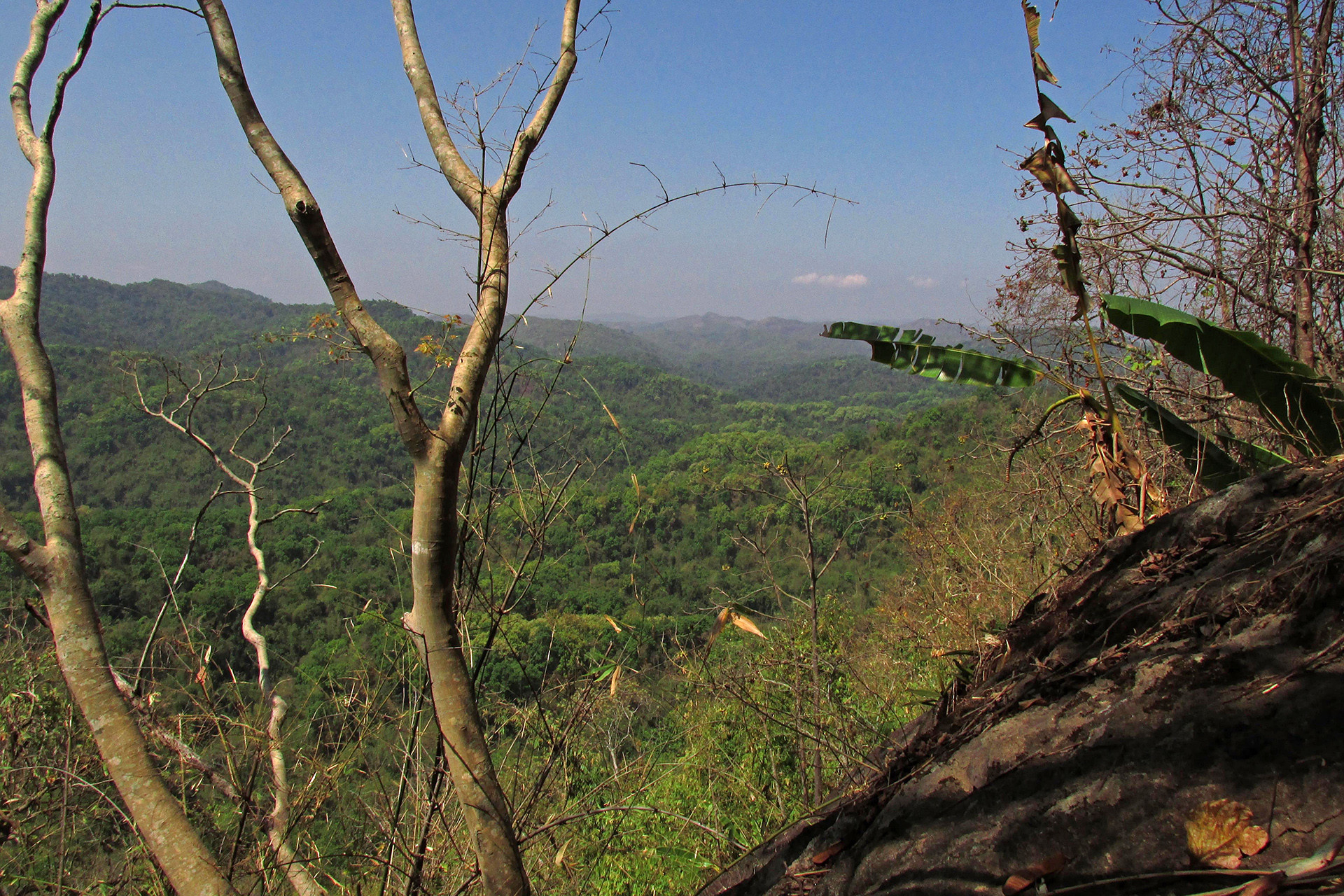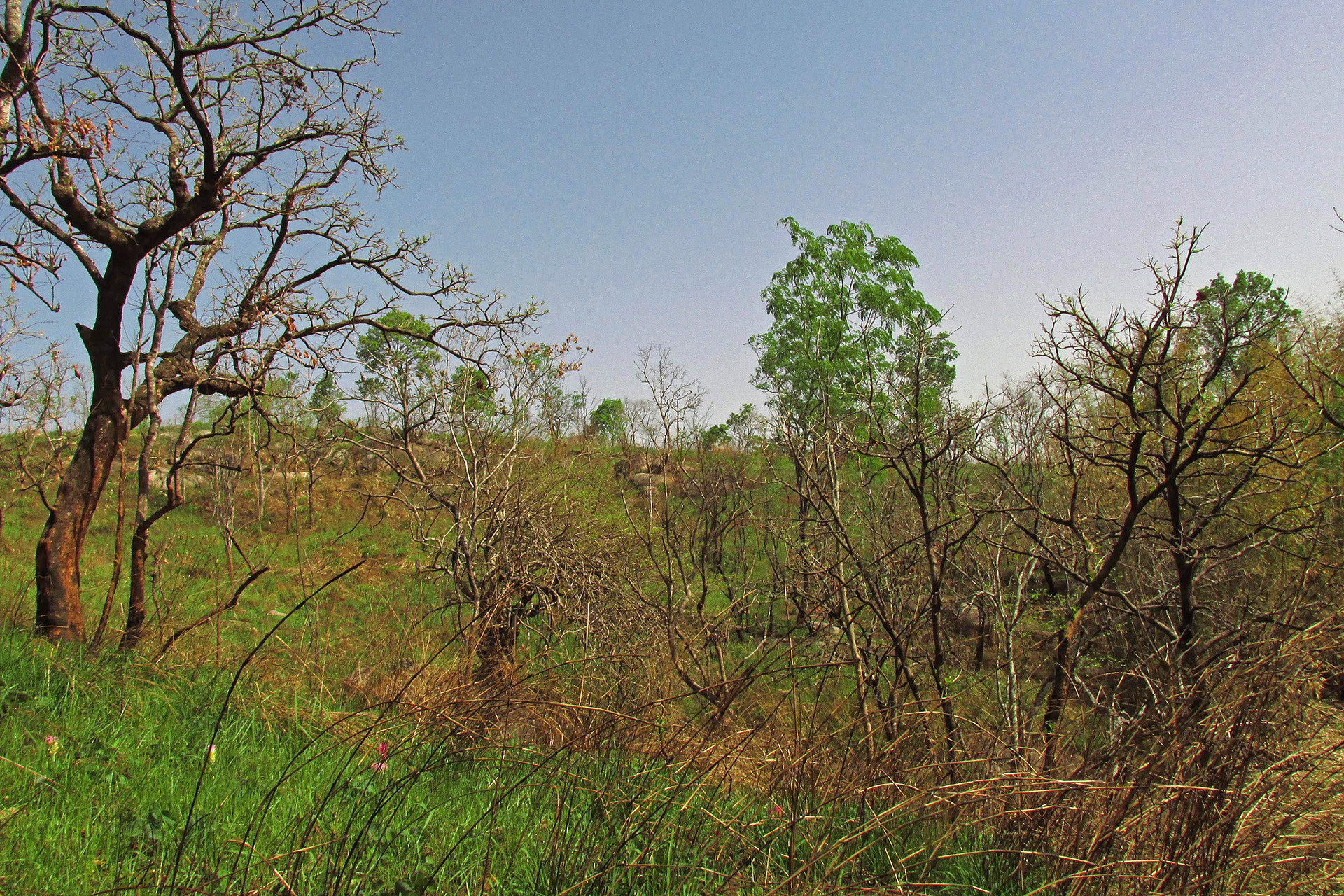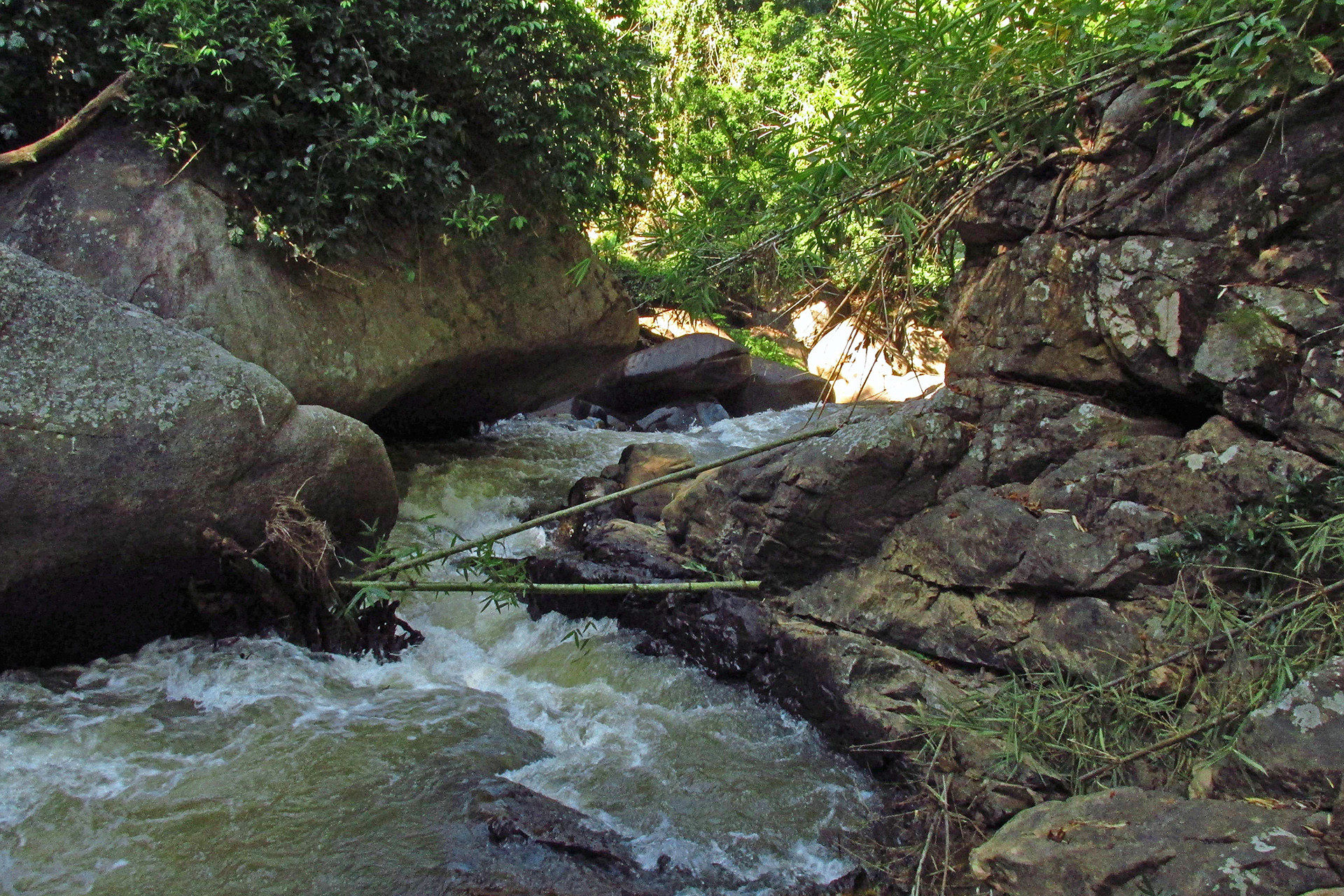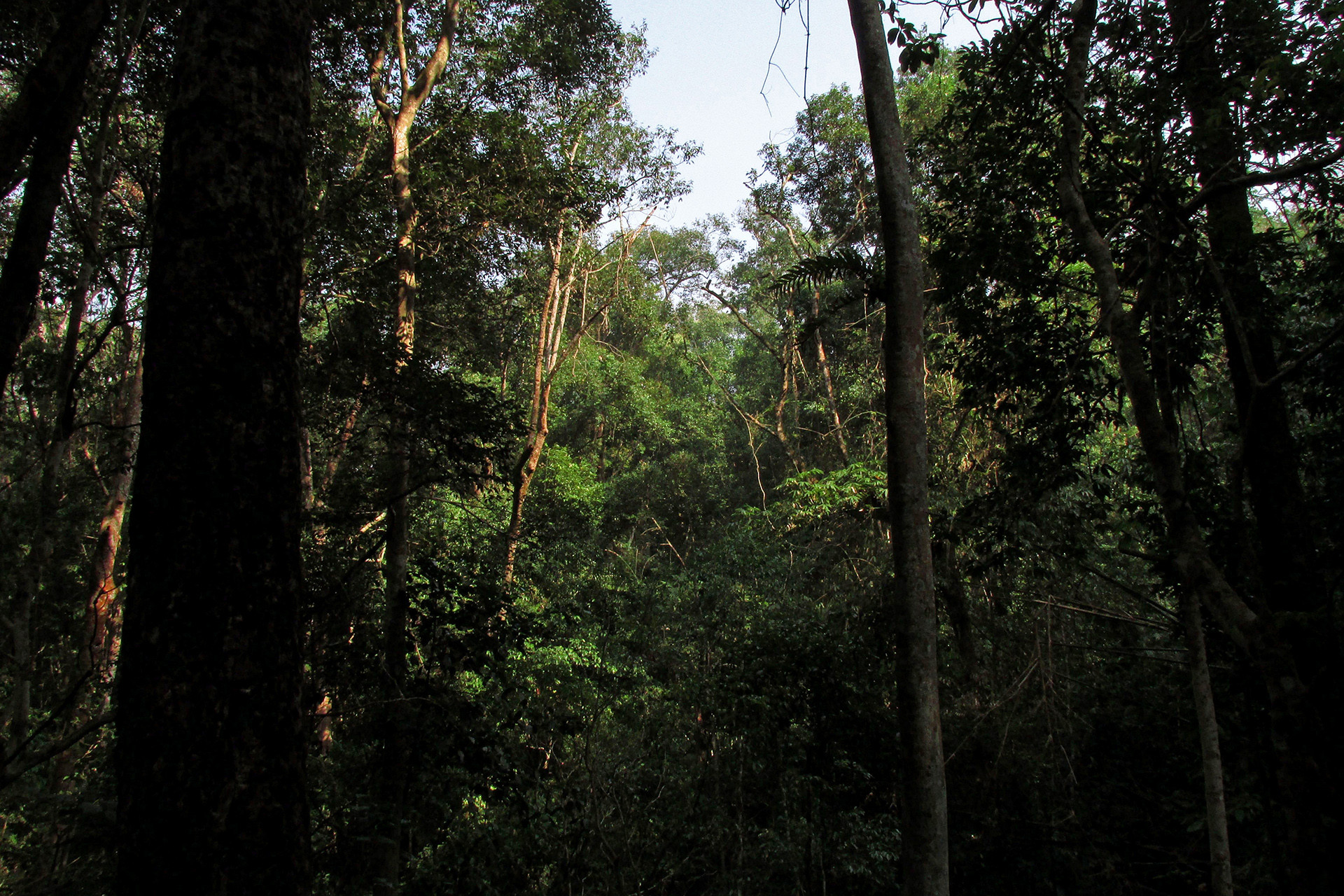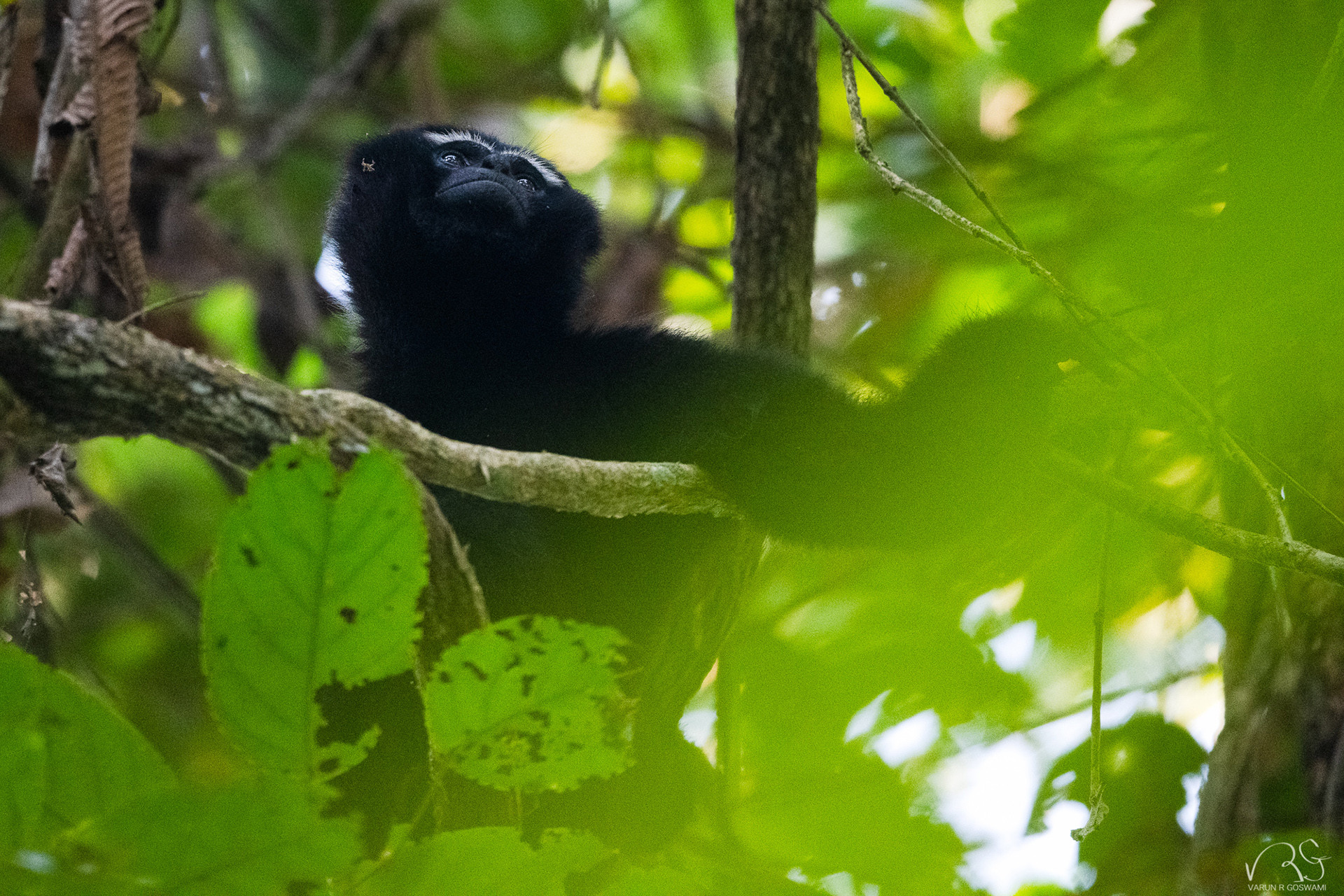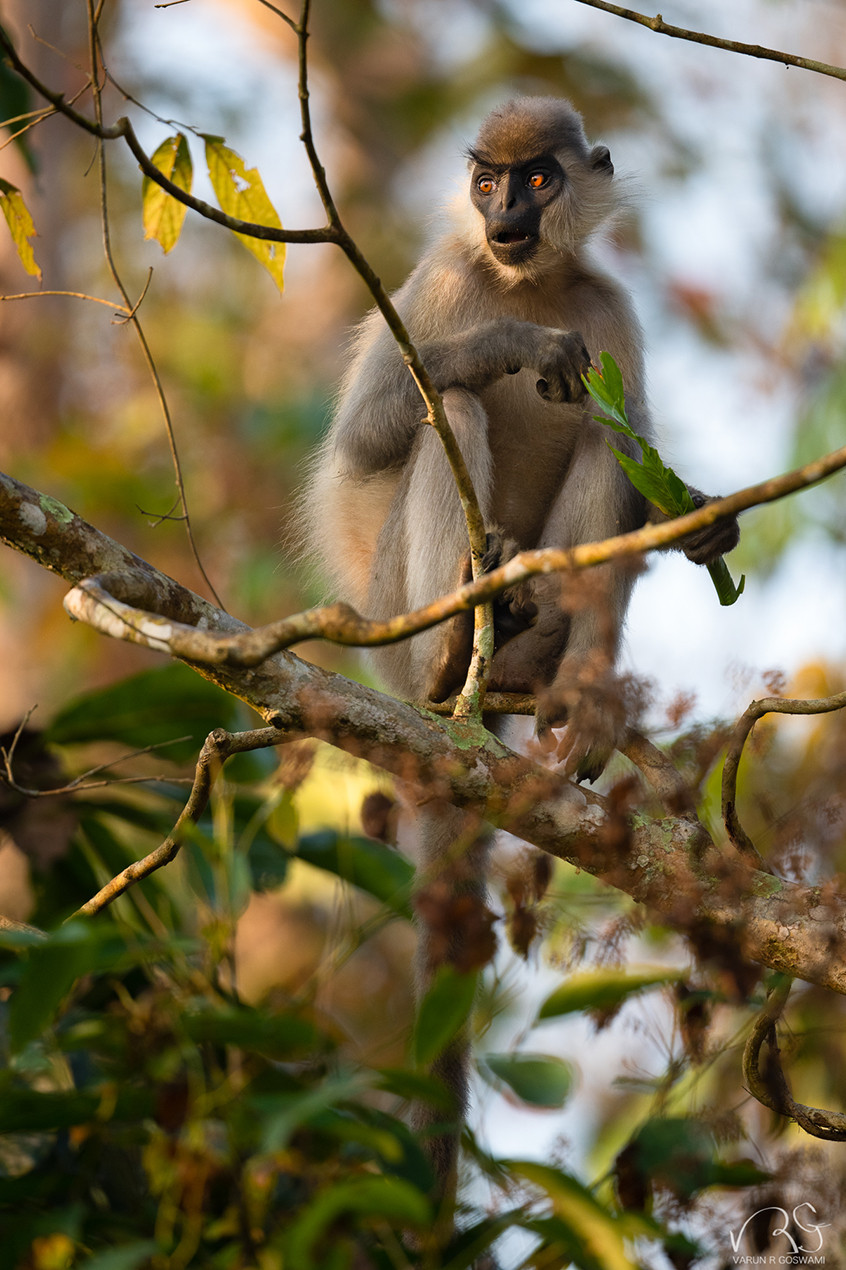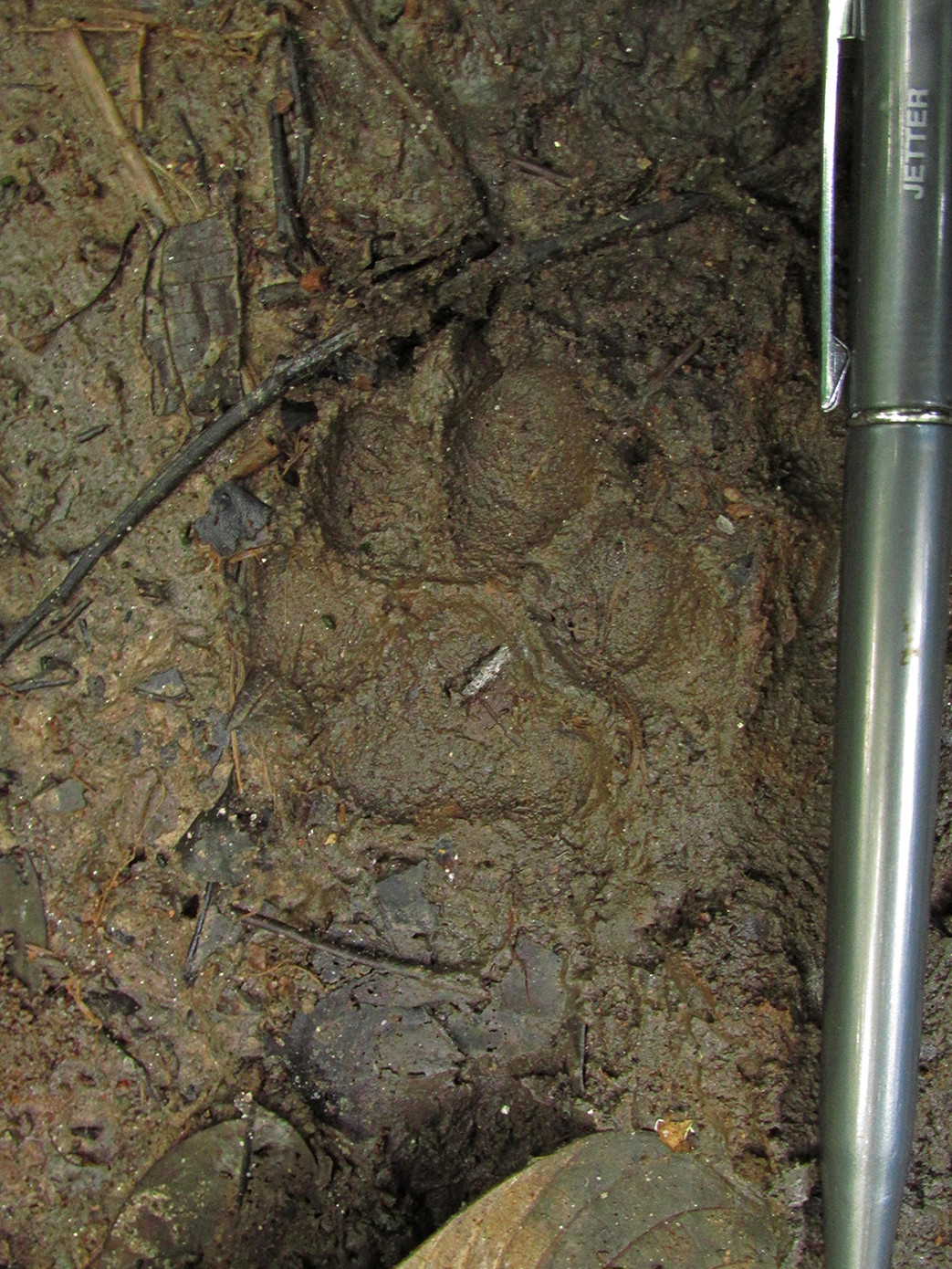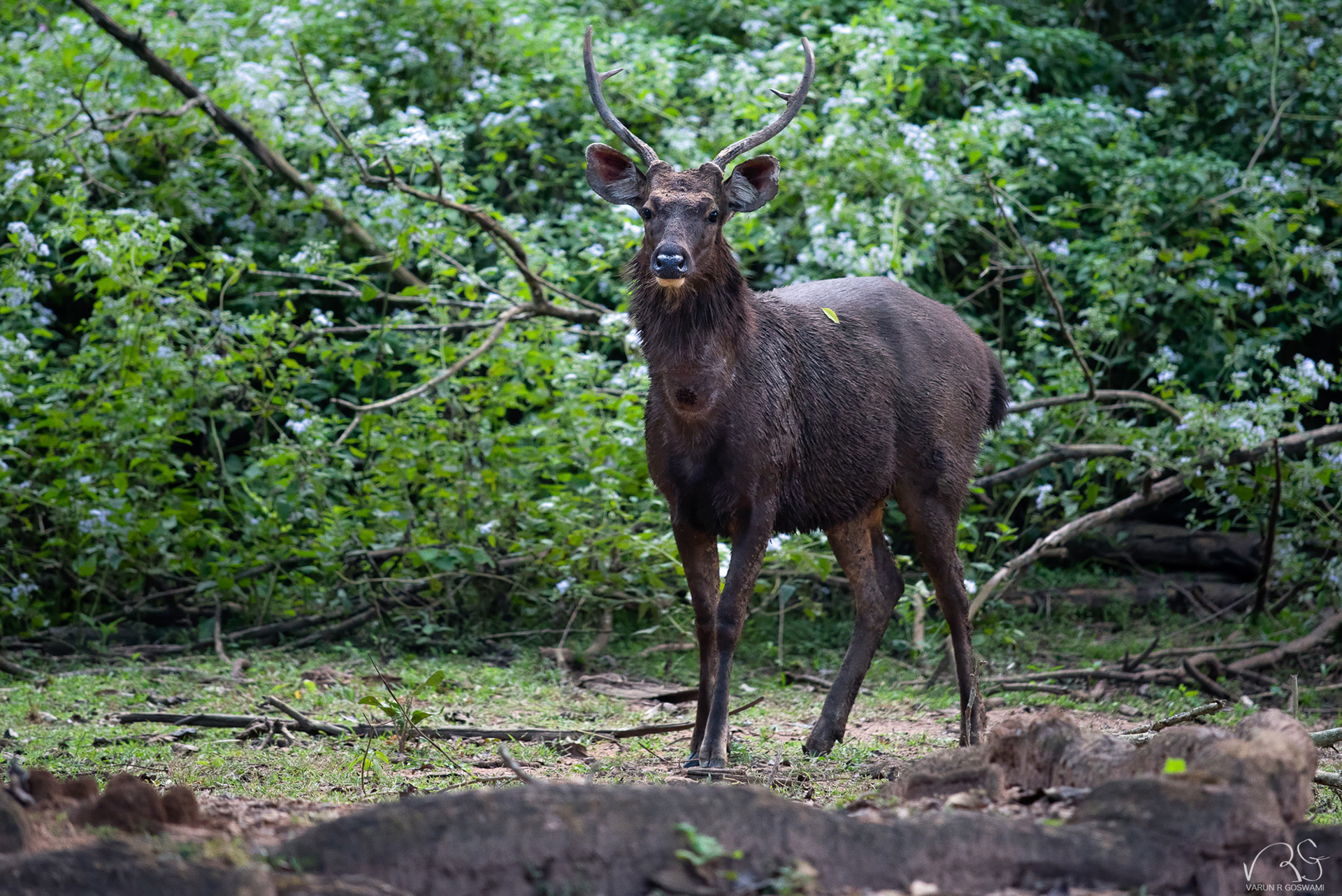There is an old folktale of U Sier Lapalang—the stag of Lapalang—who came wandering up from the plains into the hills that the Hynñiew Trep Hynñiew Skum people—the Khasi-Pnar—call home. The tale has its origins in an age long gone and unrecorded in history, when the world abounded with legends of spirits who rove over hill tracts clothed in dense forests or wander alongside rivers white in monsoon fervour. Like every other tale from that time, this too was told and retold, by elders first and then by children, changing and taking on new forms with each generation.
********************
It was early May in the subtropical hill forests of the Nongkhyllem Wildlife Sanctuary and Reserve Forest. I was on my last week of fieldwork for my postgraduate dissertation, studying a forest bird assemblage on the northern slopes of Meghalaya, my home state in northeast India. My work was to understand how different guilds of birds (groups of birds with similar forms, diets and habits) were affected by vegetation in and around the Nongkhyllem reserve. To that end, almost every morning for a little over three hours after sunrise, I was recording the different birds that I saw or heard and taking measurements of the surrounding vegetation for another three hours.
The work had had its ups and downs—both literally, because of the terrain, and otherwise. A good part of my work had been focused outside the Nongkhyllem reserve and I had expected these places to have relatively intact forests and wildlife similar to the reserve. What I found (or did not find) was extremely disappointing and work turned out to be extremely dull. My plan to spend mornings comfortably walking the hill forests and watching the sim syiem (Scarlet Minivet) in their flocks of red males and yellow females, or my favourite bird, the sim bhabriew (Long-tailed Broadbill), with its bright green body, long blue tail and black and yellow head did not pan out. Instead, my days were spent waking up early in the morning at godforsaken hours only to ramble through tall blades of Thysanolaena grass (broom grass) that covered many of the hills outside the reserve. The grass is grown in the countryside and its inflorescence is used to make brooms which are exported to markets both within and outside the state. Thysanolaena stems are thick and clumped together to form almost impregnable thickets that grow over three metres tall. The leaves would give me nasty cuts and get into my eyes as I tried to squeeze my way through them, and the morning dew on them would soak me entirely in the cold winter mornings. A mere ten metres would take ten minutes to get through and by late morning I would feel like quitting fieldwork. I kept asking myself how I ended up doing this kind of work.
Thankfully, I was done with the Thysanolaena thickets and work for the remaining days of the project was inside the reserve. The reserve forms a contiguous stand of forest in the Ri-Bhoi District of Meghalaya, bordered by villages along the Guwahati-Shillong Road to the east, and the Umtrew river to the west. From where I was, I could see the northern stretch of the forest in front of me. The opposing slope of the valley climbed steadily at first and then steeply into a hilltop with exposed rock. Beyond that were more hills covered with dense forests that disappeared from view into lower elevations. In the distant horizon, I could see tall jhum-cultivated hills outside the reserve that gradually sloped down into the forests of Assam. At the base of the valley directly below me flowed the Umran river, cutting through the forest in an east-to-west direction before joining the larger Umtrew river. It enters the forest at a characteristic stretch of rapids, the water splitting and squeezing between and beneath large rocks and boulders before slowing down to a steady flow.
I remembered another part of the Umran river that I had crossed when I first came to the reserve almost two years back. It was a similar stretch of rapids with larger boulders. Dense bamboo thickets dominated that part of the forest, and the only sound I could hear was the gushing river and the evening calls of the forest around me. I had been in awe of the powerful primordial aura radiating from the place and in that moment, it became clear to me why the ancestral Khasi-Pnar had come to hold nature in reverence. Now that I was back inside the reserve, I was reminded of why I got into this work—this singular feeling of absolute wonderment that the forest brought out.
********************
For the stag in the folktale, the hills had always called out to him. He had been born in the forests of the plains but his earliest memory was of the distant hills, dark clouds heavy with monsoon rain casting a shadow over them, and the wind blowing their cool and humid scent towards him. Ever since then the hills had captivated him and held his awe. As he was growing up, his mother would tell him fascinating stories about them. She told him of earth deities who inhabited the higher hills and flung mud and rock at each other, river deities who took the form of whitewater and raced towards the plains, and forest deities who took the form of animals and looked after the forests where herbs grew aplenty. He became intrigued by the landscapes that such stories spoke of and would conjure up in his own mind lush forests growing on slopes so high they reached into the rain clouds, and hill streams fed by these rain clouds that turned into raging torrents of whitewater. His heart yearned to wander up into these landscapes, to forage for herbs under the cool forests and drink the clear waters of the hill torrents.
Finally, on one dark monsoon day, when the elephants started their hill-bound trek, he followed them upwards.
The plains where the stag grew up were rich in their own way. There were the forest tracts where he had been born and the lakes with stretches of flooded grasslands around them. There were other animals that inhabited these plains—noisy monkeys, wild buffalo, deer of different sizes and the mighty elephants. Different types of grass and wild leaves grew aplenty and nourished the resident animals. Yet still, he yearned for the unfamiliar herbs hidden in the deep valleys of the hills, and the novel fruits growing on their high, rain-fed slopes. Every year when the monsoon started, he would notice the elephants make their way up to the hills and would see them come down again only the following winter. Once, he even saw them return only after another monsoon had come and gone. This fed his curiosity and he desperately wanted to see the unknown wonders of the hills that caused the mighty elephants to make their yearly journey upwards.
By the time he had become a young and powerful stag, restless in youth, he started making short forays into the foothills. His mother would caution him not to venture too far as the hills were not a safe place. She warned him about the people that made those hills their home. In the plains, both the mother and the young stag had come across humans from time to time. They often came into the forests to collect herbs and honey, or to cut wood and bamboo. But his mother told him that those in the hills were different from the ones they had come across in the plains. They were fierce people who took pride in the hunt and were yet to value the life of wild beings, she said.
But the pull of the hills was too much for the young stag. With each of his forays, he would climb higher and higher. Finally, on one dark monsoon day, when the elephants started their hill-bound trek, he followed them upwards.
********************
The rains had made their first appearance before the monsoon and it had been pouring intermittently since morning. Bah Banjop, my field assistant, and I had been caught in a sudden downpour. We were on our rounds of taking vegetation measurements when the rain came in. The sky had suddenly turned a dark grey, giving the day the appearance of dusk, and the wind became a shrill scream sweeping between the trees under the forest canopy. The rain front came advancing from the south like a moving wall. The forest canopy was an ineffective shelter and we decided to wait it out in a shallow cave formed by root-covered boulders piled and stacked against one another. As the rain came to a stop, dark clouds hung overhead and blocked out the late morning sun.
This part of the forest seemed to teem with wildlife. The hooleng (Western Hoolock Gibbon) had been calling since morning, and we had spotted a family group earlier—two males and one female. We came across them as we neared one of our vegetation plots. They were unaware of our presence, and we were unaware of theirs. As we were unpacking equipment, the troupe broke out into their loud haunting howls and startled us out of our wits. We immediately rushed up-slope onto some rocks to catch a glimpse of them in the trees. After straining our eyes through the foliage for some time, we managed to see both the black-coloured males and the beige-coloured female, their long, slender arms clinging to tree branches as they brachiated their way through the forest canopy. Their retreating calls were a comfort to hear, a sign of the larger wildlife still living in these forests. A little later on, we came across a lone tngaw (Capped Langur) and a dongwah (Black Giant Squirrel). The former appeared to be separated from its troupe, making its way along a low-lying bamboo culm before seeing us and rushing off, its long tail bouncing as it jumped up the bamboo. The latter was amongst the bamboo, using the overlapping culms to move between groves and feeding on whatever nuts and seeds it could find.
Other wildlife made their presence felt through fresh signs that they had left behind—the large sier (Sambar) and the little skei (Indian Muntjac) with their hoof marks and faecal pellets across the forest floor, the sniang khlaw (Indian Boar) and the spots of ploughed earth they left behind, and the kyrbei (Chinese Pangolin) through their deep round burrows. The carnivores were a little too elusive in their habits to reveal their presence, although we did see a pair of phyllad (Yellow-throated Marten) a few weeks back in the reserve and we constantly came across scat—the faecal remains of carnivores. I had hoped to see the khla shabrat (Clouded Leopard) during the course of my fieldwork in the reserve, but it seemed that I would have to come back another time for that.
The only wildlife we hoped not to cross our paths were the hati (Asian Elephant), not that we did not want to see them, but because we were terrified of them. On an earlier occasion, we had suddenly come across a few individuals only twenty metres away as we were skirting a hill. We heard the snap of bamboo culms and turned our heels and ran, not looking back to see how many there were. For two days, the hati stayed at the same place and we could not get any work done. Where we were now, only the old signs of them passing through could be seen—the large dried-up piles of dung and the round craters of flattened earth.
********************
The stag had been in the hill country for over a month and had become bewitched by it. It was everything that he had imagined and more. The air was much cooler and less sultry than down in the plains, the water that came out of the rocks was crystal clear and the sweetest he had ever drunk, and the herbs that grew on hilltop groves was the most succulent he had ever eaten. Lush forests covered every hill he climbed and streams flowed at every turn. He felt he could live out his life here.
His time wandering the hills, however, had not gone unnoticed. Some of the people living there had seen him and the news of a magnificent stag roaming the forest spread to the surrounding villages. Stories of his size and beauty were told over firelight. They spoke of how large his antlers were, how with one leap he could cover the length of two trees, and how his coat shone during both day and night, in the light of the sun and the moon. The excitement around these stories grew as more and more people heard them. Entire villages made plans to go on the hunt. Men strung their bows and filled their quivers with arrows. They readied their traps and set out on the stag’s trail with their hunting dogs at the fore searching for the scent.
The hunters were not the only ones looking for the young stag. After the second week of his leaving the plains, his mother had set out to find him. She was worried sick since he had never been gone for this long before. She searched for him at his favourite haunts in the plains—the many small hillocks that rose above the flooded grasslands—but saw no signs that he was there. Her biggest fear was that he had climbed up to the hills and for a long time she refused to accept this. But in her heart, she knew that that was where he had gone. Her chest tightened at the thought of her only son wandering those dangerous hills. As she went up the hills searching for him, her heart raced, not out of fear of danger for herself, but at the thought of never seeing her son again.
He heard the barks and the growls still behind him and amidst them, he heard another sound—that of people shouting.
It was a clear morning with blue skies. Winter was about to begin and the rains had retreated. The young stag was foraging on a flat overhang below a steep hill. The morning dew had not disappeared and it mixed with the herbs and grass giving them a fresh cold flavour. He had decided to spend his day climbing the hill and exploring this unfamiliar region. As he started moving upward on a gentle slope where large clumps of bamboo were growing, his ears pricked up and he heard a distant animal sound, much like the bark of one of the smaller deer, yet unfamiliar. He decided that it was only a deer and continued along his way. A little while later, he heard it again, only this time it sounded as if there were two animals, closer, and noisier than the deer. For a while, he wondered what it was but then carried on his way. Suddenly, he heard the sound for a third time, only three gallops away. He turned to look and saw two large animals rushing towards him, their teeth bare and their sound now a mixture of barks and growls. Panic struck him and he started running up the hill as fast as he could. One of the animals chasing him had had a head start and snapped at his leg, tearing flesh from it. He managed to kick himself free and tried to regain his speed but the pain slowed him down. He heard the barks and the growls still behind him and amidst them, he heard another sound—that of people shouting.
The hunt was over in no time; the hunters rushed out, bow in hand, following the dogs. As they ran up the bamboo-covered slope, they saw the stag, faltering as he tried to escape towards a rock face, their dogs at his heels. There was no way around the rock and they knew that they had the stag trapped.
As he stood his last, back against the rock, facing the oncoming hunters, the young stag remembered his mother wondering where she was. He wanted to see her but knew that it would never happen again. The last that he saw were silhouettes of the hunters and their strung bows against a bright green hue of light through the canopy.
The folk tale ends with the mother continuing her search through the hills for her lost son. She stumbles upon the village that had killed her son and peering through the foliage finally sees his lifeless body spread out on the ground. So terrible was the grief that overcame her that she ran demented through the forest wailing for her dead son. Her cries haunted the forest and echoed over the hills and valleys. Even the people in the nearby villages heard her and they too began to feel her grief. It was unbearable, unlike anything they had ever experienced before. So too felt the hunters who had given chase to the stag. They broke their bows and arrows and burnt their traps.
It is said that, through hearing the lamentations of the mother for her dead son, the Khasi-Pnar people learnt how to mourn the loss of life and came to better understand its value—both of humans and wild beings.
********************
As we finished our work for the day, I recollected the sight of the hooleng (Western Hoolock Gibbon), the dongwah (Black Giant Squirrel) and the tngaw (Capped Langur) that I had seen that day, and the phyllad (Yellow-throated Marten) that I had seen earlier still. There was other wildlife still found in the reserve that we had not seen signs of—the masi prut (Indian Gaur), the bshad (civets) and the khaprang heh (Bengal Slow Loris), and maybe even the rare kui khla (Spotted Linsang) and the dngiem miaw (Binturong).
The reserve forms one of the few remaining stands of contiguous old-growth forest still found in the state. It supports a relatively intact assemblage of wildlife that for now continues to survive the harmful pressures that we, as human beings, impose on the natural world. However, vast expanses of old-growth forest that once surrounded the reserve and covered thousands of square kilometres of Ri-Bhoi District have already been lost or are undergoing rapid degradation as a result of our human activities. Many wildlife populations in these forests have all but disappeared—from the hooleng (Western Hoolock Gibbon) and the tngaw (Capped Langur) to the hati (Asian Elephant) and the sier (Sambar)—leaving us greatly impoverished in both our natural and cultural heritage.
We reached the bottom of the valley on the southern bank of the Umran river, the stretch of rapids littered with large rocks and boulders where the river enters the forest. From there, we crossed over to the other bank and walked on to the paddy fields that stretched outside the boundaries of the Nongkhyllem Wildlife Sanctuary and Reserve Forest.
